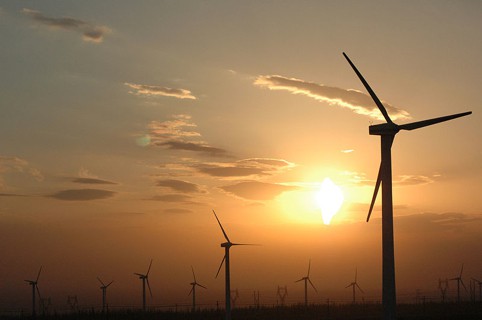It’s early days, but there appears to be genuine optimism that the COP21 climate talks currently taking place in Paris might actually achieve something that many thought impossible: a meaningful global deal on emissions.
There are bound to be disagreements, particularly between developed and developing countries, and there’s no guarantee that it won’t, as it has in the past, descend into directionless squabbling.
But so far, commentators and delegates alike have remarked on a unity of purpose, a shared sense that this is a critical moment, which has been absent from earlier summits.
There are many reasons for this. The growing weight of scientific evidence is becoming increasingly hard to ignore, whilst many countries, and not just those in the developing world, are experiencing first hand the effects of climate change. The recent tragic attacks in Paris have also fostered a sense of unity amongst delegates, something US president Barack Obama alluded to during the opening of the conference when he said, “What greater rejection of those who tear down our world than marshalling our best efforts to save it.”

But perhaps one of the biggest causes of optimism is a growing sense that China - the world’s biggest emitter of greenhouse gases – is finally on-board.
In the never-ending debate about who should cut what and by how much, it’s often been argued that in the face of fossil-burning behemoths like China, any action by small islands like Britain is meaningless.
But this argument no longer holds.
China is now in the curious position of simultaneously being the world’s biggest polluter and its biggest investor in renewable technologies. It has some of the most ambitious de-carbonisation targets on the planet, aiming to produce 15% of its energy from non-fossil fuel sources by 2020, and in 2014 invested a staggering $89bn in renewable energy projects: more than a quarter of the entire world’s investment in clean energy.
And make no mistake, this level of investment isn’t fuelled by some fluffy notion of environmental responsibility, or even a benevolent desire to protect its citizens from the hazardous smog that regularly blankets large areas of the country. It’s rooted in cold, hard economic sense, a realisation that environmental and economic sustainability are complementary rather than mutually exclusive, a recognition that renewables offer long term energy security, and an awareness that as the rest of the world cottons on, China will have a huge international market for the solar, hydro and wind technologies that it’s currently developing at a faster rate than anyone else.
There’s an important lesson here for UK government and industry.
As we’ve long argued, the UK is in many ways in an enviable position for the development of clean energy technologies. It’s home to a vast repository of expertise, and blessed with a geography that enables it to develop, trial and deploy a host of renewable technologies.
In recent months the UK government has turned its back on renewable technology, but the astonishing level of investment in these technologies by an economy as driven as China’s should serve as a reminder to both government and industry that it’s not too late to build on the economic potential of the UK’s very own renewables skills base.











UK Enters ‘Golden Age of Nuclear’
Apologies if this is a duplicate post - a glitch appears to have removed the first one: > While I welcome the announcement of this project, I note...